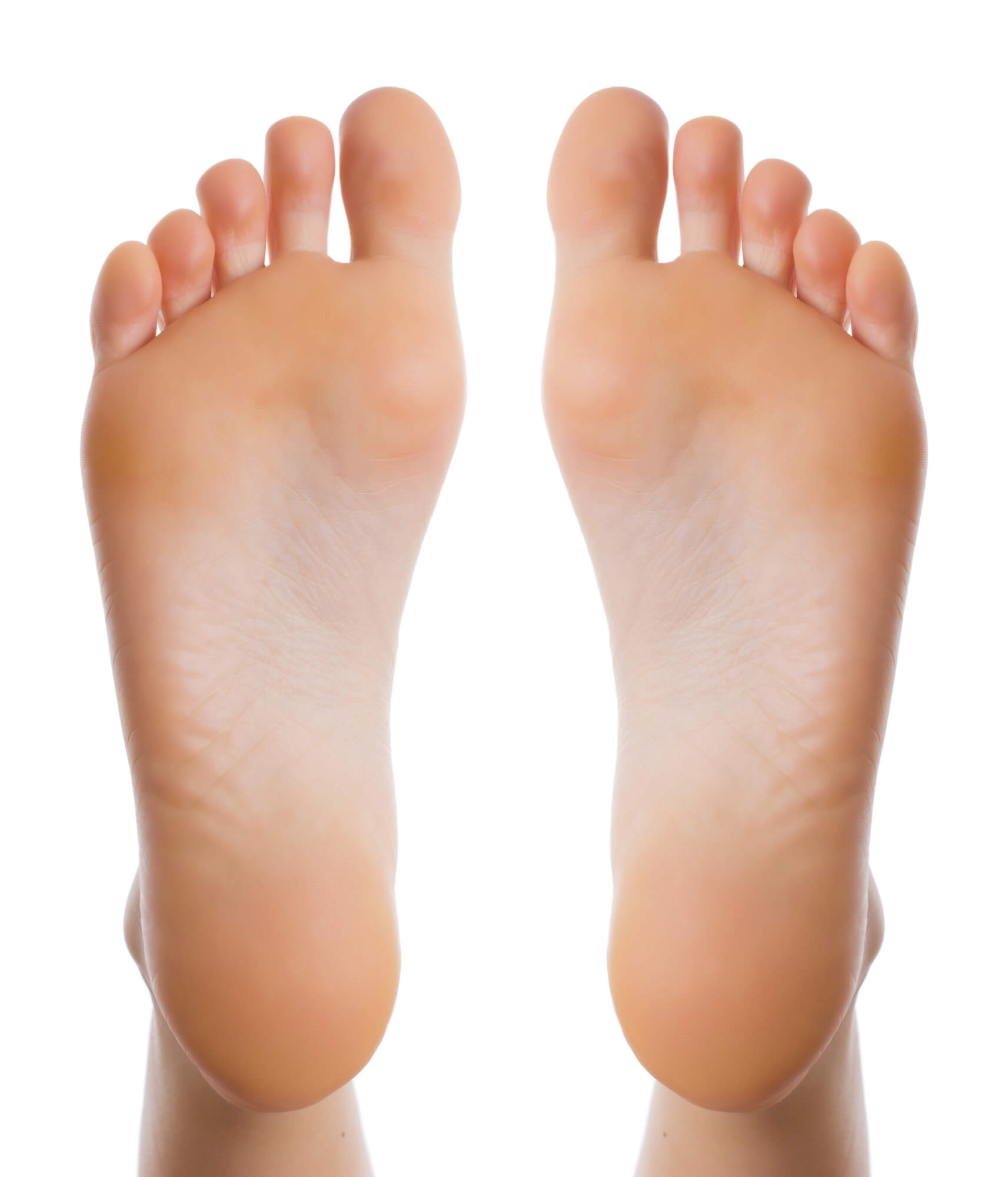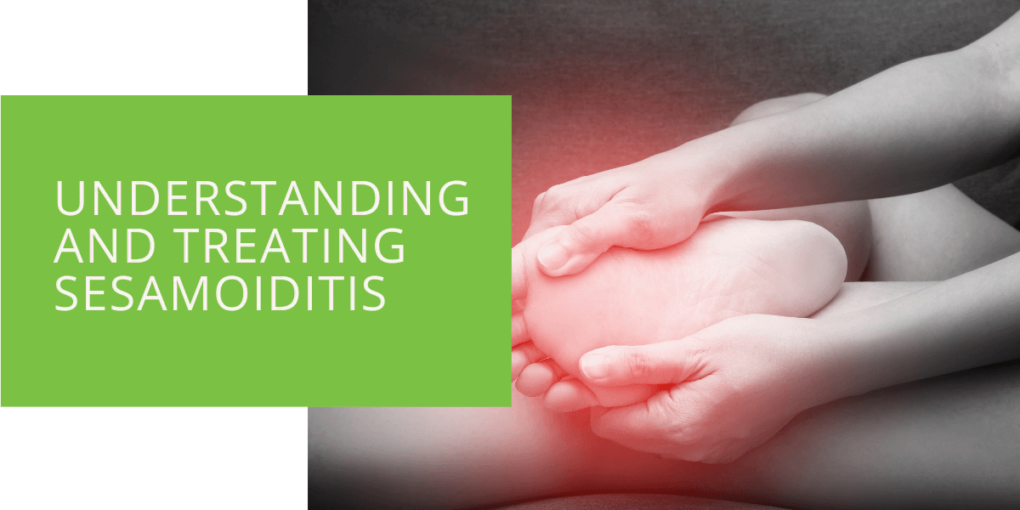Understanding and Treating Sesamoiditis
Sesamoiditis is a common condition affecting the bones in the foot's ball. These small bones, called sesamoids, are located near the big toe and play an important role in supporting the tendon that moves the big toe. When these bones become injured or irritated, it can lead to pain and inflammation in the ball of the foot, making everyday activities such as walking and running difficult and painful.
What is Sesamoiditis?
Definition and Causes
Sesamoiditis is an overuse injury when the sesamoid bones become inflamed or injured. The sesamoids are small, pea-shaped bones located under the big toe joint that act as a pivot point for the tendons that control the big toe. They are not visible on the surface of the foot and can be difficult to detect when injured.
Sesamoiditis is most commonly caused by overuse, particularly in people who engage in high-impact activities such as running, dancing, and jumping. It can also be caused by the repetitive stress of standing for long periods, ill-fitting footwear, or a sudden injury to the foot. People with certain foot conditions, such as flat feet or high arches, are also at a higher risk of developing sesamoiditis.
Symptoms
Symptoms of sesamoiditis include pain and tenderness in the ball of the foot, especially under the big toe joint. The pain may be felt when bearing weight on the affected foot or flexing the big toe. The area around the sesamoids may also be swollen and warm. In severe cases, a bump or callus may form on the bottom of the foot.

Diagnosis and Treatment
How Sesamoiditis is Diagnosed
If you suspect sesamoiditis, you must see a podiatrist or other foot doctor for a proper diagnosis. Your doctor may physically examine your foot and ask about your symptoms and medical history. An X-ray may be ordered to check for signs of a sesamoid fracture. In some cases, an MRI or CT scan may be used to get a better look at the sesamoids.
Conservative Treatments for Sesamoiditis
Most cases of sesamoiditis can be treated with conservative measures such as rest and ice, physical therapy, and medications to relieve pain and inflammation. Your doctor may also recommend orthotic devices, such as arch supports or custom orthotics, to help redistribute pressure away from the sesamoids.
Physical therapy can also be very beneficial in helping to reduce pain and inflammation of the tendons and muscles around the sesamoids. Soft tissue therapy, stretching and strengthening exercises, and taping can help to alleviate pain and improve function.
It's also important to ensure your footwear is appropriate for your foot type and activity level. A podiatrist or other foot specialist may recommend shoes with a wider toe box and more support to help alleviate pressure on the sesamoids.
Surgery for Sesamoiditis
Surgery may be recommended in rare cases where conservative treatment is ineffective. Surgery for sesamoiditis typically involves the removal of the affected sesamoid bone(s), a procedure called a sesamoidectomy. This is usually done as a last resort, as the sesamoids play an important role in the function of the big toe, and removing them can lead to long-term complications. Surgery recovery time can vary, but it usually takes several weeks to a few months before patients can return to their normal activities.

Preventing Sesamoiditis
The best way to prevent sesamoiditis is to reduce the stress on the sesamoids. This includes proper shoe selection, gradually increasing activity levels, and stretching and strengthening exercises to keep the muscles in the foot and lower leg strong and flexible.
Proper shoe selection is crucial to prevent sesamoiditis and other foot injuries. Wearing shoes with a wide toe box and good arch support can help reduce stress on the sesamoids. Avoid shoes with high heels and narrow toes, which can put added pressure on the sesamoids.
Stretching and strengthening exercises are also important to help prevent sesamoiditis. These exercises can help keep the muscles in the foot and lower leg strong and flexible, which can help reduce stress on the sesamoids.
It's also important to increase your activity level gradually, especially if you're starting a new exercise program or returning to an activity after a period of inactivity. Sudden increases in activity can stress the sesamoids and lead to injury.
Conclusion
Sesamoiditis is a common and painful condition affecting the sesamoid bones in the ball of the foot. It's most commonly caused by overuse but can also be caused by ill-fitting footwear, a sudden injury, or certain foot conditions.
The most effective way to manage sesamoiditis is through proper diagnosis, treatment, and prevention. The podiatrist or other foot doctor may recommend a combination of rest, ice, physical therapy, and medications to relieve pain and inflammation. In some cases, surgery may be necessary to remove the affected sesamoid bone.
It's also important to pay attention to your symptoms and seek medical attention if you notice any signs of sesamoiditis. With the right treatment and proper precautions, it is possible to relieve pain and inflammation and improve the quality of your life.
FAQ
What is the fastest way to cure sesamoiditis?
While there is no definitive answer for the quickest way to cure sesamoiditis as it depends on the severity of the condition, in general, most cases of sesamoiditis can be treated with rest, ice, physical therapy, and medication. These conservative measures can help to reduce pain and inflammation and promote healing. In some cases, a podiatrist may also recommend orthotic devices or custom orthotics to redistribute pressure away from the sesamoids.
Does sesamoiditis ever heal?
Yes, sesamoiditis can heal with proper treatment and care. However, healing time can vary depending on the severity of the condition and the individual's response to treatment. It's important to work closely with a podiatrist or other foot doctor to develop an appropriate treatment plan that addresses the condition's underlying cause and promotes healing.
How long does it take to heal sesamoiditis?
The healing time for sesamoiditis can vary depending on the severity of the condition and the individual's response to treatment. In mild cases, it may take a few weeks to a few months for the pain and inflammation to subside and for the sesamoids to heal. More severe cases may take longer. It's important to work closely with a podiatrist or foot doctor to develop an appropriate treatment plan and monitor progress.
What can you do for sesamoiditis?
Treatment for sesamoiditis typically includes a combination of rest, ice, physical therapy, and medication to relieve pain and inflammation. Your doctor may also recommend orthotic devices, such as arch supports or custom orthotics, to help redistribute pressure away from the sesamoids. Physical therapy can be beneficial in helping to reduce pain and inflammation of the tendons and muscles around the sesamoids. Soft tissue therapy, stretching, and taping can help to alleviate pain and improve function.
Why is sesamoiditis so painful?
Sesamoiditis is painful because it involves inflammation or injury to the small bones in the ball of the foot. These bones play an important role in supporting the tendon that moves the big toe, so when they become injured or irritated, it can lead to pain and inflammation in the ball of the foot. This can make everyday activities such as walking and running difficult and painful.

